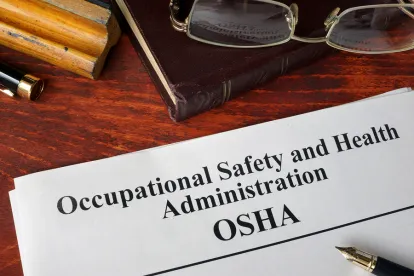The Tenth Circuit Court of Appeals (covering Oklahoma, Kansas, New Mexico, Colorado, Wyoming, and Utah) issued an opinion on Tuesday (10/27/2020) that expands the applicability of OSHA’s process-safety-management standard to interconnected processes—even when the interconnected process does not contain any highly hazardous chemicals.
The Tenth Circuit reached its decision based upon a plain reading of the regulatory definition of “process.” In doing so, the court also rejected Wynnewood Refining’s argument, under Kisor v. Wilkie, that the court should consider the “text, structure, history, and purpose” of the regulation, including close review of the PSM standard’s preamble. The Tenth Circuit rejected Wynnewood’s argument as a misunderstanding and misapplication of Kisor, noting that such a review is unnecessary when the plain language of the regulation is unambiguous.
Facts
One of the refinery’s boilers exploded after too much natural gas entered its firebox. As a result of the explosion, two employees died. The boiler did not contain any highly hazardous chemicals, but the boiler was connected to two other parts of the refinery that did contain highly hazardous chemicals: the fluid catalytic cracking unit (“FCCU”) and the alkylation unit. OSHA cited the refinery for repeat violations under the PSM standard.
Procedure
An OSHA administrative law judge affirmed all but one of the citations, but changed the characterization from “repeat” to “serious” because the refinery had been sold in between the dates of similar citations. The OSHRC upheld the ALJ’s decisions. Both Wynnewood and OSHA appealed the OSHRC’s opinion.
Arguments on Appeal
The refinery argued on appeal that the boiler should not be covered under the PSM standard because (1) the boiler did not contain any highly hazardous chemicals and (2) the boiler cannot be part of a process simply because it is interconnected to a PSM-covered process. Wynnewood maintained that an interconnected vessel is not part of a process unless the interconnected vessel itself poses a risk of catastrophic release of highly hazardous chemicals.
OSHA disagreed. The agency argued that the boiler was connected to the FCCU and the alky unit, both of which were covered by the PSM standard. And separately, the agency argued that the boiler was covered because the boiler was “located such that a highly hazardous chemical could be involved in a potential release.”
Analysis
In its analysis, the Tenth Circuit stuck to the regulatory language. First, the definition of “process” does not require that a vessel contain a highly hazardous chemical in order to be part of a process. In fact, the court reached the opposite conclusion finding that “the comprehensive phrase ‘any activity involving’ captures a wide swath of vessels in that they need only be part of any activity that involves a highly hazardous chemical.” Based upon the regulatory language, the court considered the boiler part of a process even though it did not contain any highly hazardous chemicals.
Second, the court analyzed the grammatical structure of the regulatory definition and considered specific canons of statutory construction—which are fun for me, but I won’t bog you down with the details. The bottom line is that the Tenth Circuit held OSHA need only prove that the boiler was connected to a covered process. Here the boiler was connected via pipeline to two covered processes: the FCCU and the alky unit.
Even More Fun
There is, of course, much more in the attached 50-page opinion including a good discussion of the three-factor substantial-continuity test and successor liability. The Tenth Circuit affirmed the Commission’s decision to re-characterize the “repeat” violations to “serious” because of the sale of the refinery. The recharacterization lowered the applicable penalty. This is a fact-intensive inquiry and a good reminder about successor liability.
There is also a lengthy dissent that disagrees with both of the majority’s holdings.



 />i
/>i
